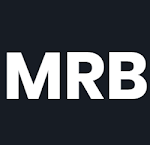The Reverse Mortgage Meaning/Definition
The American Association of Retired Persons (AARP) defines a reverse mortgage as:
“A loan against your home that you do not have to pay back for as long as you live there.”
Features and Benefits
A reverse mortgage loan has a number of distinctive characteristics that have helped to make it a well-liked choice for seniors age 62 and above.
You might be able to use it to convert some of the equity in your house into cash.
The Federal Housing Administration (FHA) provides backing for HECM reverse mortgage loans (FHA).
enables you to age in place; you are not need to leave your house.
No monthly mortgage payment is required, but the loan is due when the final borrower vacates the property or defaults on the loan agreement. Property taxes, homeowner's insurance, and house upkeep are the borrower's responsibilities.
Your home is still yours, but it is subject to a lien from the
A reverse mortgage loan has a variety of special characteristics that make it an attractive choice for seniors age 62 and older.
It might assist you in converting some of the equity in your house into cash.
The Federal Housing Administration (FHA) provides backing for a Home Equity Conversion Mortgage (HECM) reverse mortgage loan (FHA).
enables you to mature in situ so that you don't have to leave your house.
No monthly mortgage payment is required, but the loan is due when the last surviving borrower vacates the property or fails to abide by the conditions of the loan. Homeowners insurance, real estate taxes, and upkeep are all the responsibility of the borrower.
You are still the owner of your house, subject to a lien from the
Optional Payment Methods
Depending on the borrower's preferences, there are several methods that reverse mortgage loan funds might be disbursed. You can modify your disbursement type through your servicer for a charge if you decide on one kind and subsequently decide that another type would be more appropriate. But first, the following methods of payment are available to borrowers:
sum total
If a lump sum distribution is chosen, the monies are given to the borrower at closing. There is a withdrawal cap in the first year of the loan as additional consumer protection. This indicates that the withdrawal amount is capped at 60% of the principal limit for the first twelve months. If additional needed payments (like those for an existing mortgage) are required
Uses of Reverse Mortgage Loan
Borrowers of reverse mortgages have used their money to a variety of uses. The loan profits may be used for anything you wanted, with a few exceptions including limits on utilising cash for estate planning service providers and specific annuities or insurance products. The following are the most typical uses of reverse mortgage funds:
settling a current mortgage (required as part of the loan)
lowering regular expenses
Paying for medical costs or in-home care
fixing the house
Preserving it for conceivable crises
The reverse mortgage loan will first pay off any existing mortgages for customers as part of the loan. If so, this can be one of the loan's most advantageous features for you. because housing

